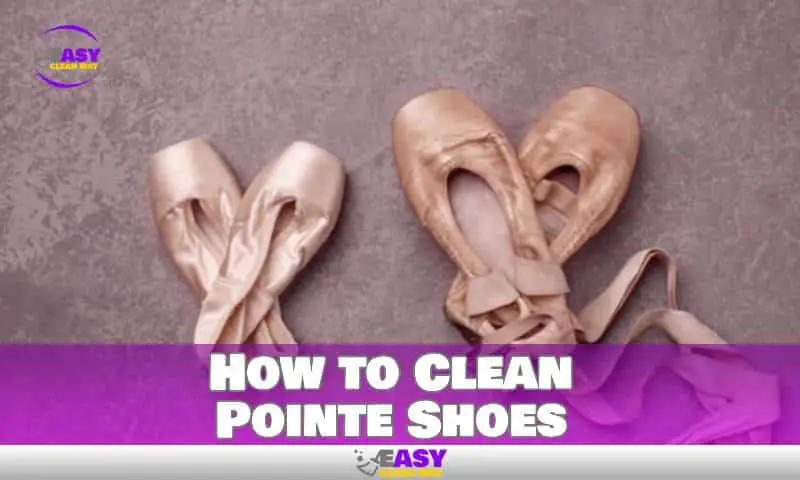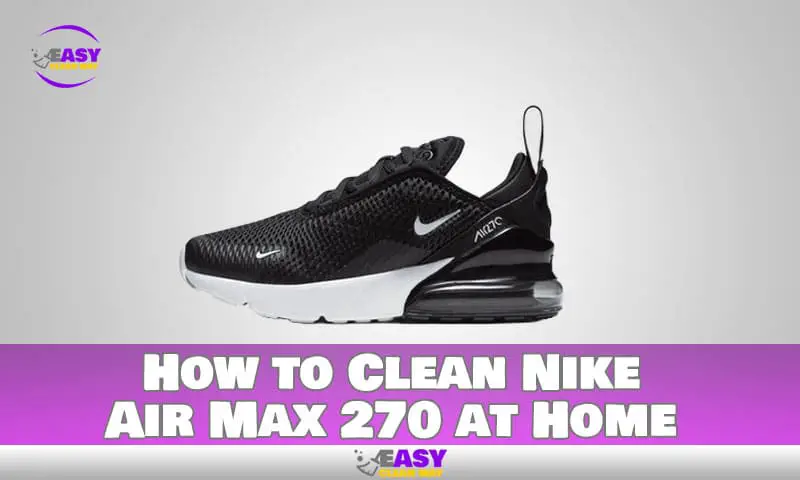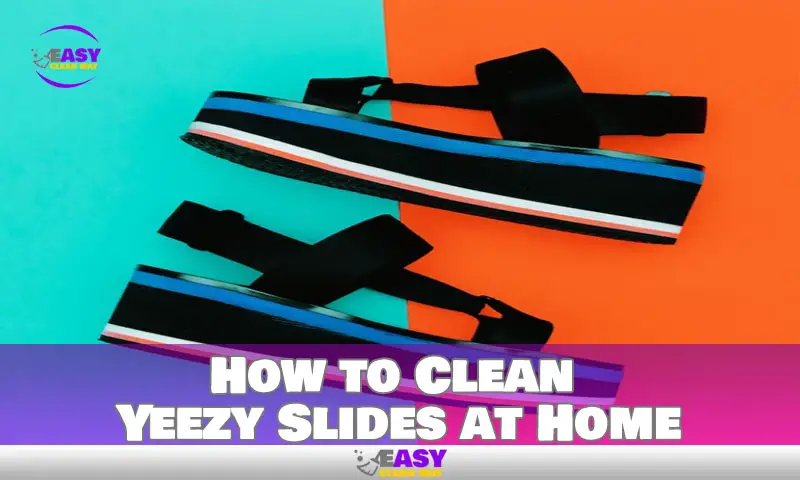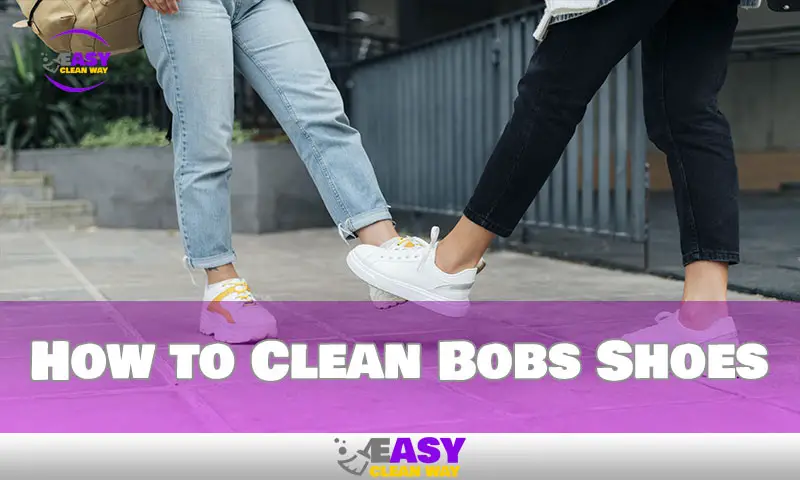To clean pointe shoes, remove the ribbons and elastic, wipe the exterior with a damp cloth, stuff them with newspaper to maintain shape, and allow them to air dry completely. Pointed shoes require regular cleaning to remove dirt and sweat buildup and maintain their longevity.
Cleaning them involves a few simple steps that can be easily done at home. By following these steps, you can keep your pointe shoes clean and in good condition, ensuring optimal performance and extending their lifespan.
Step 1: Preparation For Cleaning
Before you start cleaning your pointe shoes, it’s important to gather the necessary materials and tools to ensure an effective and efficient cleaning process. Here’s what you’ll need:
- Soft cloth or towel: This will be used to wipe away dirt and debris from your pointe shoes.
- Mild soap or detergent: Choose a gentle soap or detergent that won’t damage the delicate materials of your shoes.
- Water: You’ll need water to dampen the cloth or towel for cleaning.
- Soft-bristled brush: A soft-bristled brush will help you remove stubborn dirt from hard-to-reach areas of your pointe shoes.
- Seam ripper or small scissors: These tools will come in handy if you need to remove any loose threads or stitches from your pointe shoes.
Now that you have everything you need, let’s move on to the next step of cleaning your pointe shoes.
Removing Any Excess Dirt Or Debris From The Shoes
Before you begin the actual cleaning process, it’s important to remove any excess dirt or debris from your pointe shoes. Here’s how you can do it:
- Gently tap the shoes together or against a surface to dislodge any loose dirt or debris.
- Use a soft cloth or towel to wipe away any remaining dirt from the surface of your pointe shoes.
- Pay attention to the seams and crevices, as dirt tends to accumulate in these areas.
- If there are any stubborn dirt or stains, you can use a soft-bristled brush to gently scrub the affected area.
Remember, proper cleaning and maintenance of your pointe shoes are crucial to prolonging their lifespan and keeping them in the best possible condition. With the right tools and techniques, you’ll be ready to tackle the next step of the cleaning process.
Step 2: Removing Ribbons And Elastics

When it comes to cleaning pointe shoes, it’s important to properly detach the ribbons and elastics before moving on to the cleaning process. This step ensures that the attachments don’t get damaged and that you can clean the shoes thoroughly.
Follow these guidelines to safely remove the ribbons and elastics:
- Loosen the ribbons: Before removing the ribbons, gently loosen them by pulling on the ends. This will make it easier to untie them later without causing any damage to the shoes.
- Remove the stitches: If your ribbons are stitched onto the shoes, you’ll need to carefully remove the stitches. Use a small pair of scissors or a seam ripper to cut the stitches, being careful not to cut into the fabric of the shoes.
- Untie the ribbons: Once the stitches are removed, untie the ribbons. Take your time to avoid any unnecessary ripping or tearing.
- Detach the elastics: To remove elastics, first identify where they are attached to the shoes. They are usually stitched at the heel and/or sides of the pointe shoes. Use a pair of scissors or a seam ripper to carefully cut the stitches and detach the elastics from the shoes.
- Inspect for damage: While removing the ribbons and elastics, closely inspect the shoes for any signs of damage, such as loose threads or frayed edges. If you notice any issues, consider repairing them before proceeding with the cleaning process.
Remember, taking care when removing the ribbons and elastics will help preserve the integrity of your pointe shoes and ensure they stay in good condition for longer. Now that you have successfully detached these attachments, you can move on to the next step in the pointe shoe cleaning process.
Step 3: Spot Cleaning The Exterior
Keeping the exterior of your pointe shoes clean is just as important as maintaining the interior. Regular spot cleaning can help remove stains, dirt, scuff marks, and sweat stains, ensuring your Pointe shoes look their best.
Here are some key points to consider when spot-cleaning the exterior of your pointe shoes:
Choosing The Right Cleaning Method Based On The Shoe Material
Different pointe shoe materials require different cleaning methods. Consider the following options based on the material of your shoes:
- Leather: Use a damp cloth to gently wipe away dirt and stains. Avoid using excessive water to prevent damage to the leather. You can also use a leather cleaner specifically designed for dance shoes.
- Satin: Satin shoes are delicate, so it’s crucial to be gentle when cleaning them. Blot any stains with a clean cloth and mild soap and water. Test the cleaning solution on a small, inconspicuous area before applying it to the entire shoe.
- Canvas: Canvas shoes are generally easy to clean. Use a soft brush or cloth to remove dirt and stains. If necessary, you can also wash canvas shoes by hand using mild soap and water. Allow them to air dry.
- Synthetic materials: Synthetic pointe shoes can be wiped clean with a damp cloth and mild soap. Avoid using harsh chemicals or excessive water that could damage the material.
Addressing Common Stains And Dirt On The Exterior Of The Pointe Shoes
Various stains and dirt can mar the appearance of your pointe shoes. Here are some common issues and how to tackle them:
- Grass stains: Gently scrub the stained area with a soft brush or cloth dipped in a mixture of mild soap and water. Rinse thoroughly and let the shoe air dry.
- Mud or dirt: Allow the mud or dirt to dry completely, then brush it off gently. If any residue remains, use a damp cloth to wipe it away.
- Ink or pen marks: Dab the stained area with a cloth moistened with rubbing alcohol. Be careful not to scrub too vigorously, as it may spread the ink. Rinse the area with clean water and let it dry.
- Makeup or foundation: Use a mild soap and water solution to gently remove any makeup or foundation stains. Blot the area rather than rubbing it to prevent the stain from setting in further.
- Blood stains: Act quickly by rinsing the stained area with cold water. Gently scrub the stain with mild soap and water. If the stain persists, try using hydrogen peroxide, but test it on a small area first.
Removing Scuff Marks
Scuff marks can occur from regular wear and tear. Here’s how to minimize their appearance:
- Leather shoes: Apply a small amount of leather conditioner or petroleum jelly to a clean cloth and gently rub the scuff mark in circular motions. Continue until the scuff mark is less visible.
- Satin shoes: Gently brush the scuff mark with a soft toothbrush. Avoid applying excessive pressure to prevent damaging the satin. If the mark remains, try using a white pencil eraser to gently rub it away.
- Canvas shoes: Use a soft brush or pencil eraser to gently rub away the scuff mark. Be careful not to apply too much pressure, as it may damage the canvas material.
- Synthetic shoes: Follow the manufacturer’s instructions for removing scuff marks from synthetic materials.
Cleaning Sweat Stains
Sweat stains can accumulate on the exterior of your pointe shoes. Here’s how to deal with them:
- Leather, satin, and canvas shoes: Mix a solution of equal parts water and vinegar. Dampen a cloth with the solution and gently wipe away the sweat stains. Make sure to rinse the area with clean water and allow the shoes to air dry thoroughly.
- Synthetic shoes: Follow the manufacturer’s instructions for cleaning sweat stains on synthetic materials.
Step 4: Cleaning The Interior
Importance Of Maintaining Hygiene Inside The Pointe Shoes
Maintaining proper hygiene inside your pointe shoes is crucial to preventing bacterial growth and maintaining a fresh, clean feel. Here’s why it’s important:
- Sweat and moisture can breed bacteria and lead to unpleasant odors.
- Regular cleaning of the interior helps prevent infections and foot-related issues.
- Maintaining cleanliness ensures a longer lifespan for your pointe shoes.
Methods For Freshening The Interior And Preventing Odor
To keep the interior of your pointe shoes fresh and odor-free, consider these methods:
- Air them out: After each use, remove the insole and allow your pointe shoes to dry naturally in a well-ventilated area. This helps eliminate moisture and prevent bacterial growth.
- Use baking soda: Sprinkle a small amount of baking soda inside the shoes to absorb odors. Leave it overnight and shake out the excess before wearing it.
- Rotate your shoes: Alternating between two or more pairs of pointe shoes allows them to fully dry out between uses, reducing the chances of odor buildup.
Using Odor-Absorbing Products
Different products can help absorb moisture and combat odor inside your pointe shoes:
- Odor-absorbing insoles: Invest in insoles specifically designed to absorb odors. These can be easily inserted into your pointe shoes for added freshness.
- Activated charcoal sachets: Place these small sachets inside your shoes to effectively absorb moisture and eliminate odors.
- Tea tree oil wipes: Wipe the interior of your pointe shoes with tea tree oil-infused wipes to kill bacteria and prevent odor. Ensure they are fully dry before wearing them.
Spraying With Disinfectants
To ensure thorough cleanliness of your pointe shoe’s interior, consider using disinfectants:
- Anti-fungal sprays: Look for sprays specifically formulated for ballet shoes. Spray the interior of your pointe shoes, targeting problem areas. Allow them to dry completely before wearing them.
- Vinegar solution: Mix equal parts water and vinegar and spray the inside of your shoes. Vinegar acts as a natural disinfectant and helps eliminate odors. Ensure your pointe shoes are dry before use.
By following these methods to clean and freshen the interior of your pointe shoes, you can maintain hygiene, prevent odor, and enjoy dancing with confidence. Remember to prioritize the cleanliness of your shoes to extend their lifespan and reduce the risk of foot-related issues.
Step 5: Drying The Pointe Shoes
Drying pointe shoes properly is crucial to maintaining their shape and longevity. Follow these techniques to ensure your pointe shoes dry effectively:
- Remove the insoles and padding from the shoes. This allows for better airflow and prevents moisture accumulation.
- Gently squeeze out any excess moisture from the shoes. Avoid wringing or twisting the shoes, as this can deform them.
- Place the pointe shoes in a well-ventilated area with good airflow. A shoe drying rack or a ventilated shoe bag can be useful for this purpose.
- Avoid direct sunlight or heat sources, as they can cause the shoes to warp or lose their shape.
- Flip the shoes periodically to allow even drying on all sides. This helps to maintain their balance and prevent one side from becoming stretched or misshapen.
- Patience is key. Allow the shoes to air dry naturally. Rushing the drying process with artificial heat can be detrimental to the shoes’ structure.
Avoiding Common Mistakes That May Deform The Shoes During Drying
Improper drying techniques can lead to deformities in pointe shoes, affecting their fit and performance. Here are some mistakes to avoid:
- Avoid using a hair dryer or heat source to speed up the drying process. Excessive heat can warp the shoes and cause irreversible damage.
- Don’t leave the shoes on a towel or in a confined space. This can trap moisture, leading to a damp environment that promotes bacterial growth and odors.
- Never place wet pointe shoes directly on a heat source. The direct heat can cause the shoes to shrink, lose elasticity, or become misshapen.
- Avoid storing damp pointe shoes in a closed bag or container. Proper airflow is essential for drying and preventing odor-causing bacteria.
- Resist the temptation to place pointe shoes on a radiator or heater. The intense heat can cause the shoes to dry too quickly, leading to brittleness or cracking.
- Do not use excessive force or pressure to accelerate the drying process. This can result in stretching or warping the shoes out of their original shape.
Remember, taking care of your pointe shoes includes proper drying techniques. By following these guidelines, you can extend the lifespan of your pointe shoes and maintain their performance and comfort.
Step 6: Strengthening The Shoes
To ensure that your pointe shoes remain strong and supportive, it’s important to take steps to reinforce their structure. Here are some tips to help you prevent premature wear and tear, glue loose parts, and strengthen the shank of your pointe shoes:
Preventing premature wear and tear:
- Rotate multiple pairs of pointe shoes to allow them to rest and regain their shape between uses.
- Use toe pads or gel cushions to protect the toes and extend the lifespan of the shoes.
- Check the fit regularly to ensure that the shoes are not too tight or too loose, which can contribute to premature damage.
Gluing loose parts:
- If you notice any loose or detached parts on your pointe shoes, such as the satin or ribbons, use fabric glue to secure them back in place.
- Apply a small amount of fabric glue to the affected area, press firmly, and allow it to dry completely before wearing the shoes again.
Strengthening the shank:
- Strengthening the shank of the pointe shoes is crucial for maintaining support and stability during dances.
- Use a hardening product specifically designed for pointe shoes to strengthen the shank. Follow the manufacturer’s instructions carefully.
- Apply the hardening product to the area just below the arch of the foot, where the shank needs the most support.
- Allow the product to dry completely before using the shoes.
Remember, properly maintaining and reinforcing the structure of your pointe shoes will not only prolong their lifespan but also ensure your safety and comfort while dancing. Take the time to regularly inspect and care for your shoes to keep them in optimal condition for your performance.
Step 7: Attaching Ribbons And Elastics

Properly attaching ribbons and elastics to your pointe shoes is crucial for ensuring comfort and safety while dancing. Follow these steps to achieve a secure attachment:
Begin by positioning the ribbons:
- Fold the ribbon in half to find its center point.
- Place the center of the ribbon just above the arch of the shoe, aligning it with the heel seam.
- Avoid attaching the ribbon too low, as it can interfere with foot movements.
Sewing the ribbons:
- Start sewing from the inside of the shoe, using a strong and durable thread.
- Position the needle on the inside of the shoe, close to the heel seam where the ribbon is placed.
- Securely stitch the ribbon to the shoe, ensuring it is tightly attached.
- Make multiple stitches for added strength and durability, following a diagonal pattern.
Positioning the elastics:
- Measure each elastic to the appropriate length, depending on your foot size and personal preference.
- Attach the elastic to the back of the shoe, just above the heel seam.
- Ensure that the elastic is snug but not overly tight, allowing for flexibility and movement of the foot.
Sewing the elastics:
- Similar to sewing the ribbons, start from the inside of the shoe using a sturdy thread.
- Position the needle on the inside of the shoe, close to the heel seam, where the elastic is attached.
- Sew the elastic to the shoe using multiple stitches, creating a secure and supportive attachment.
Test the attachment:
- Once you have sewn the ribbons and elastics, give them a gentle tug to ensure they are securely attached.
- If any part feels loose, reinforce it with more stitches for added stability.
By correctly positioning and sewing the ribbons and elastics onto your pointe shoes, you can dance with confidence, knowing that your shoes provide the necessary support and comfort for your movements.
FAQs
How Often Should Pointe Shoes Be Cleaned?
Pointe shoes should be cleaned after every use to remove sweat and dirt buildup and maintain their lifespan.
Can I Put Pointe Shoes In The Washing Machine?
No, you should never put pointe shoes in the washing machine, as it can damage the delicate materials and structure of the shoes.
What Is The Best Way To Clean Pointe Shoe Soles?
To clean pointe shoe soles, use a damp cloth or baby wipe to gently wipe away dirt and buildup. Avoid soaking the shoes.
How Can I Dry Pointe Shoes Quickly?
After cleaning, stuff pointed shoes with newspaper or paper towels to absorb excess moisture and let them air dry in a well-ventilated area.
Conclusion
To keep your pointe shoes in optimal condition, regular cleaning is essential. By following the proper cleaning methods outlined in this blog post, you can ensure the longevity and performance of your pointe shoes. Always start by removing any loose dirt or debris from the shoes.
Gently hand-wash them using a mild detergent and lukewarm water. Avoid using harsh chemicals or machines that could damage delicate materials. Once cleaned, allow the shoes to air dry naturally, away from direct heat or sunlight. Additionally, it’s important to store your pointe shoes properly when not in use.
Investing in a shoe bag or using tissue paper can help maintain their shape and prevent moisture buildup. Lastly, remember to check the manufacturer’s instructions for any specific cleaning recommendations for your pointe shoes. By following these steps, you can keep your pointe shoes clean, fresh, and ready for your next dance performance.
Hey there! I’m Alton Smith, your Clean Expert blogger. I’m on a quest to help you conquer chaos and embrace the joys of a tidy life.





